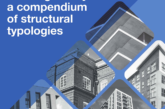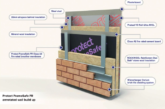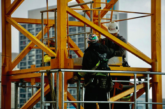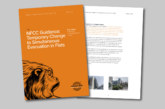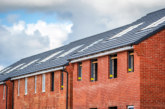 Matthew Warburton, Policy Advisor at the Association of Retained Council Housing (ARCH), discusses the progress made by government to make buildings safer following the tragic Grenfell disaster and the consultation on proposals to reform the building safety regulatory system for high-rise buildings.
Matthew Warburton, Policy Advisor at the Association of Retained Council Housing (ARCH), discusses the progress made by government to make buildings safer following the tragic Grenfell disaster and the consultation on proposals to reform the building safety regulatory system for high-rise buildings.
On 10th June, the Government wrote to Grenfell survivors and others affected by the tragedy to mark the two years that have elapsed since the Grenfell Tower fire. Many were disappointed by the contents of the letter. Unsafe ACM cladding has so far been removed from only a small minority of affected blocks, 24 of the 202 families who lost their homes in the fire have not yet been found permanent new homes, and the Grenfell Public Inquiry is now unlikely to complete its work before 2022.
MHCLG figures published in April reported that ACM cladding had been removed from 46 high-rise blocks owned by councils and housing associations, and work had started on 88 more; plans to deal with 22 more blocks were in place but not yet started; in only one case was a remediation plan not yet in place. There has been less progress on privately owned blocks. Work had started on 16 blocks but in no case had yet been finished. Although work had not started, remediation plans were in place for 126 more blocks, but there were 84 blocks where no plans to remediate had yet been agreed.
Although over six months has passed since the deadline for responses to last summer’s Green Paper on Social Housing, there is no date for publication of the Government’s response. It looks increasingly likely that it will be delayed until the new Prime Minister is in place. The most significant area of progress has been the launch of a consultation on proposals for reform of the building safety regulatory system for high-rise buildings, based on the recommendations of Dame Judith Hackitt’s review.
Consultation proposals
The consultation, launched by MHCLG on 6th June, is organised around four sets of proposals, involving:
• Clearer responsibilities for those building or managing these buildings;
• A stronger voice in the system and better information for residents;
• Greater oversight by regulators; and
• Tougher enforcement when things go wrong.
Although the Hackitt review recommended applying new requirements for building safety to buildings over 10 storeys, the Government proposes widening the scope to buildings lived in by multiple households of six storeys or more, and plans over time to extend this to include non-residential buildings such as prisons and hospitals where vulnerable people sleep.
Clearer responsibilities are to be achieved by designating five designated ‘dutyholders’ who will be responsible for the safety of a building when it is being designed and built, including ensuring that Building Regulations are complied with, and creating a new role of ‘accountable person’ legally responsible for the fire and structural safety of a building once people are living in it. The precise responsibilities of people in each of these roles are spelt out in the consultation paper.
The Government intends to empower residents by giving them the right safety information about their building and by making sure that they can raise any views or concerns about the safety of their building and not be ignored. To make sure these requirements are met, the Government proposes to create a new Building Safety Regulator responsible for operation and enforcement of the new regime and oversight of the competence of people working on buildings, particularly those taking up the various dutyholder roles. The Regulator will have powers to take quick and effective action including fines where the requirements of the new regime have not been met. Legislation will tighten up manufacturers’ responsibilities and create new criminal offences to ensure all requirements of the new regime are met.
The proposals are comprehensive and likely to be effective; the main risk is delay in implementing them, particularly those that involve new legislation, while the attention of many in government is focussed elsewhere.


